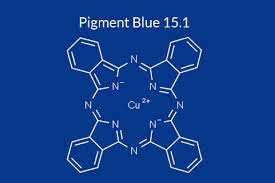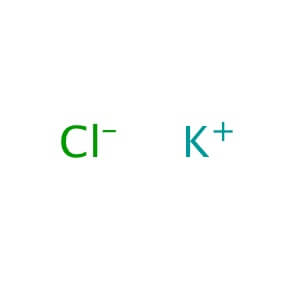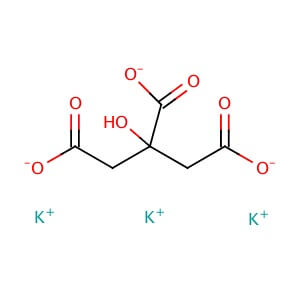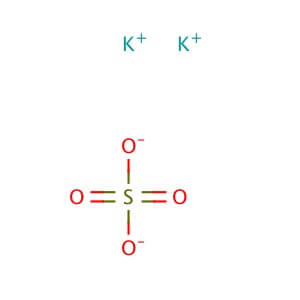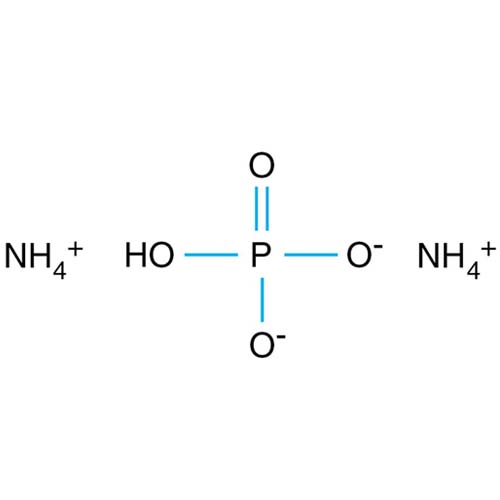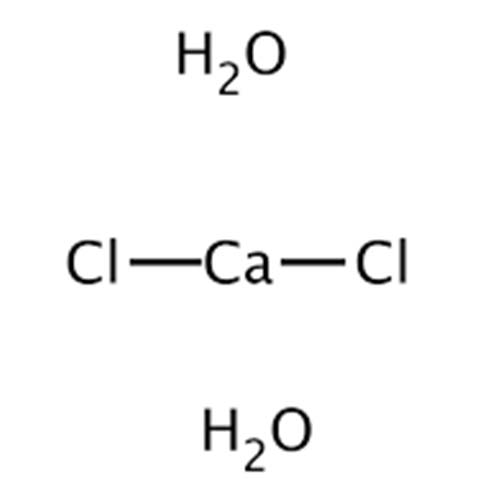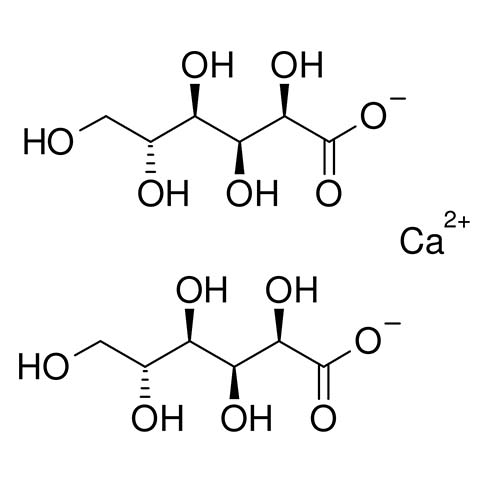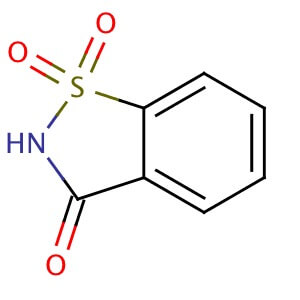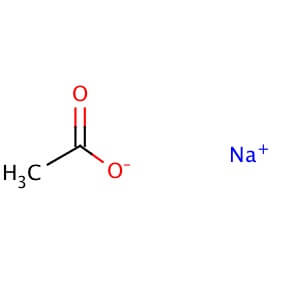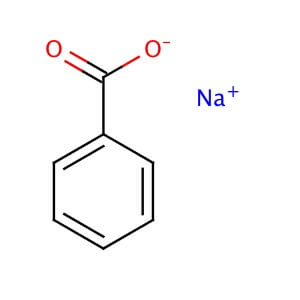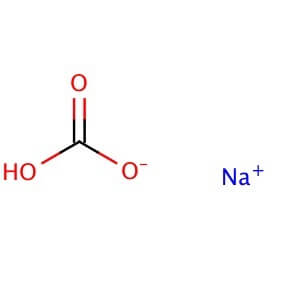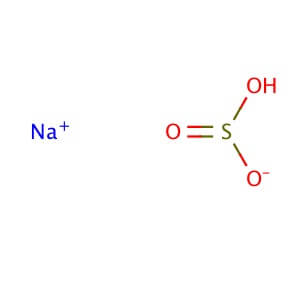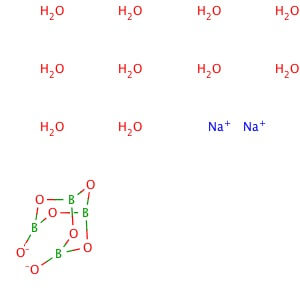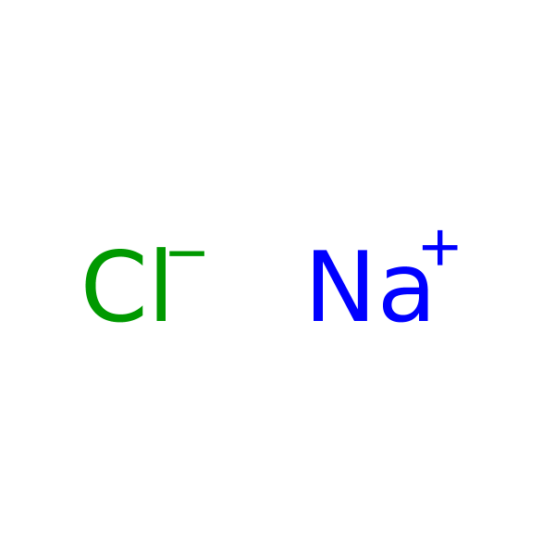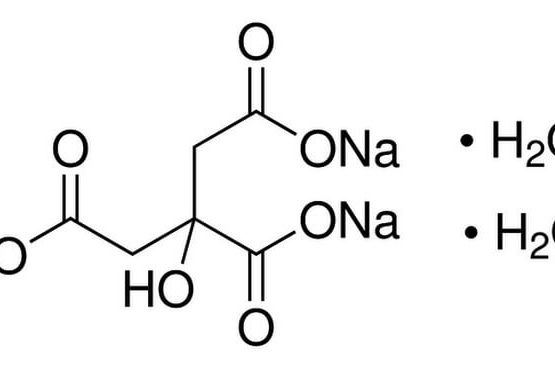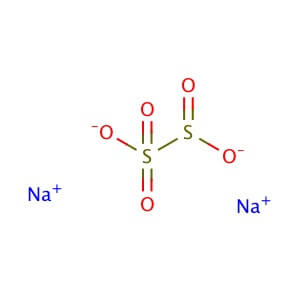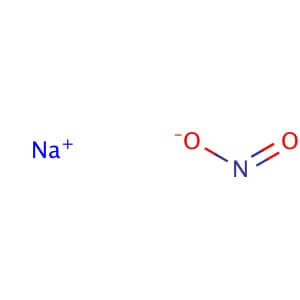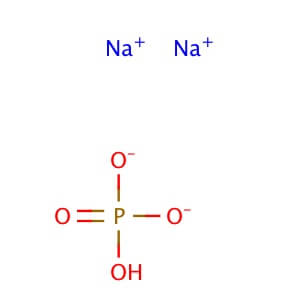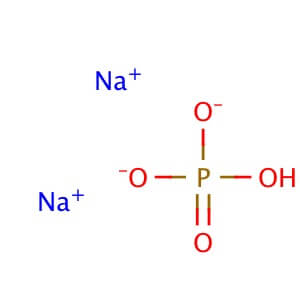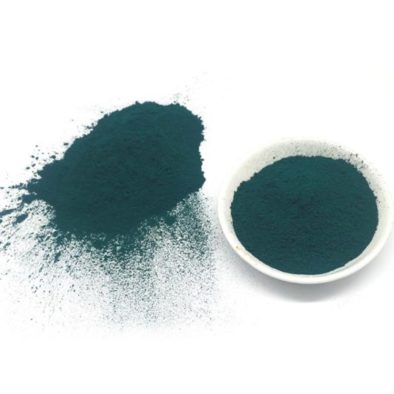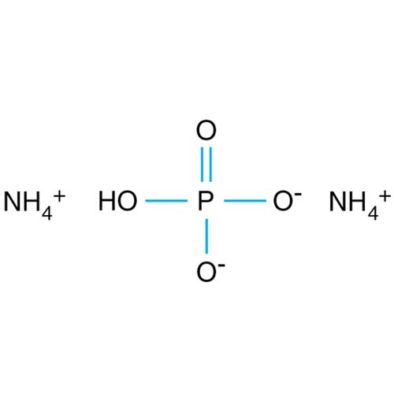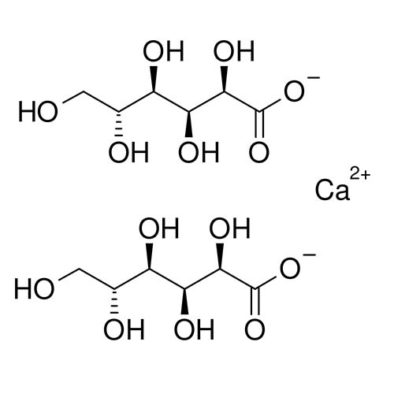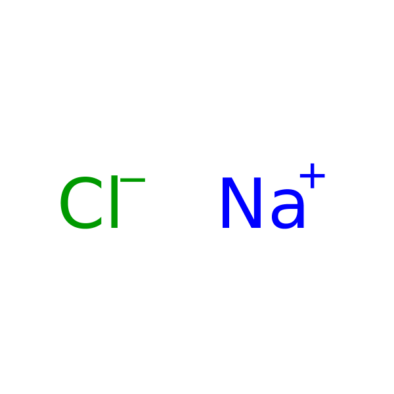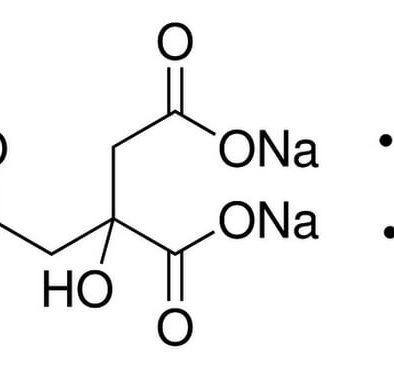Products
Showing 31–60 of 74 items
Pigment Blue 15:1
CAS NO: 147-14-8
TECHNICAL DATA OF ANALYSISProduct NamePigment Blue 15:1Chemical ClassPhthalocyanine BlueChemical FormulaC32H16N8CuMolecular Weight576C.I. Number74160Bulk density ( gm / cc )0.35 gm/ccPhysical AppearanceBlue Powderlspecific Gravity ( 2O° C )1.45 to 1.80pH of I0% Aq. Soln.7+=1Heat StabilityStable at 280° CMoisture Content<0.5%Sieve Residue ( on 325 BSS Mesh )<0.5%Solvent FastnessExcellentLight fastnessOut StandingChemical ResistanceExcellentPigment Blue 15:3
CAS NO: 147-14-8
Technical SpecificationChemical NameCopper Phthalocyanine BlueColour index NamePigment Blue 15:3Colour index No.74160Molecular Weight575.5AppearanceBright Blue PowderpH6-8Sieve residue0.1% Max.Light FastnessFull Shade : 7-8Tint Shade : 7Heat Stability for 5 Minute300°CBulk Density0.33 g / vvSolubility in Water0.25%Moisture Content0.5% Max.Solvent FastnessExcellentPigment Green 7
CAS NO: 1328-53-6
OTHER NAME: PHTHALOCYANINE GREEN G
TECHNICAL DATA OF ANALYSISProduct NamePigment Green-7Chemical ClassCopper Phthalocyanine GreenMolecular Weight1127C.I. Number74260Bulk density ( gm / cc )0.42 – 0.48Physical AppearanceGreen PowderSolubility in waterInsolubleOdorOdorlessSpecific Gravity ( 2O° C )1.5 to 1.6pH of I0% Aq. Soln.7+=1Heat Stability for 5 min.240° CMoisture Content<0.5%Sieve Residue ( on 325 BSS Mesh )<0.5%Solvent FastnessExcellentLight fastnessOut StandingChemical ResistanceExcellentPotassium Acetate
CAS NO: 127-08-2
MOLECULAR FORMULA :- C2H3KO2
MOLECULAR WEIGHT :- 98.14 g/mol
SPECIFICATION BP USP Description White or almost white, crystalline powder or colorless cryastals,deliquescent. White or almost white, crystalline powder or colorless cryastals,deliquescent. Solubility Very soluble in water, freely soluble in ethanol (96 %) – Identification A. Reaction
B. Reaction
A. Reaction of acetates.
B. Reaction of potassium
A. Reaction of acetates.
B. Reaction of potassium
Appearance of solution Clear & Colorless – pH 7.5-9.0 7.5-8.5 Heavy metals – NMT 20 ppm Limit of Sodium – NMT 0.03 % Reducing substances The solution remains pink. – Chloride NMT 200 ppm – Sulfates NMT 200 ppm – Aluminum NMT 1 ppm – Iron NMT 20 ppm – sodium NMT 0.5 % – Loss on drying NMT 3.0 % NMT 1.0 % Residual Solvents – Meets the requirements Assay 99.0 %-101.0 % 99.0%-100.5 % Potassium Carbonate Anhydrous
CAS NO: 584-08-7
MOLECULAR FORMULA :- K2CO3
MOLECULAR WEIGHT :- 138.21 g/mol
SPECIFICATION BP USP Description White or almost white granular Powder hygroscopic. White or almost white granular Powder hygroscopic. Solubility Freely Soluble in water, practically insoluble in Ethanol (96%) – Identification (A) Reaction
(B) Reaction
(C) Reaction
A : The solution is strongly alkaline B: Test A gives the reaction of Carbonates &Bicarbonates.
C: Test A gives reaction of Potassium.
A: Test A gives the reaction of Carbonates. B: Test A gives reaction of Potassium.
Insoluble substances – The solution is complete, clear & Colorless. Heavy metals – NMT 5 ppm Calcium NMT 100 ppm – Iron NMT 10 ppm – Chlorides NMT 100 ppm – Loss on Drying NMT 5.0 % NMT 0.5 % Sulphates NMT 100 ppm – Organic Volatile Impurities – Meets the requirement Residual Solvents – Meets the requirement Assay 99.0 % – 101 % (on dry basis) 99.5 % – 100.5 % Potassium Chloride
CAS NO: 7447-40-7
MOLECULAR FORMULA: KCl
MOLECULAR WEIGHT: 74.55
Alternate Names: Potassium Chloride is also known as KCl. Application: Potassium Chloride is a common laboratory reagent and calibration standard for measuring electrical conducivity. Purity: >99% Description: Potassium Chloride is commonly used as a laboratory reagent as a standard. Potassium Chloride may be used as a calibration standard ionic solution for measuring electrical conductivity because Potassium Chloride solutions, when prepared carefully, produce repeatable measurable properties. Potassium Chloride is also a good source of ionic chloride, which should precipitate insoluble chloride salts upon addition to a solution of an appropriate metal ion. Oral Potassium Chloride is commonly used to replenish vital potassium in the body, and has also been shown to lower blood pressure. Potassium Chloride is commonly used in fertilizer. Physical State : Solid Solubility : Soluble in water (340 mg/ml at 20° C), alcohol (slightly), and ethanol (1 g/250 mL). Insoluble in ether, and acetone. Storage : Store at room temperature Melting Point : 770° C (lit.) Boiling Point : 1500° C (lit.) Density : 1.98 g/cm3 at 25° C (lit.) Refractive Index : n20D 1.49 Ki Data : CA IV: Ki= 90 µM (human); CA I: Ki= 6 mM (human); CA IX: Ki= 33 mM (human); CA V: Ki= 156 mM (human); CA II: Ki>200 mM (human) Potassium Citrate
CAS NO: 866-84-2
MOLECULAR FORMULA: C6H5K3O7
MOLECULAR WEIGHT: 306.39
SPECIALITY FINE CHEMICALS (AR / LR / ACR /GR / IP / BP / USP / FSSAI )Potassium Hydrogen Phthalate
CAS NO: 877-24-7
MOLECULAR FORMULA : C8H5KO4
MOLECULAR WEIGHT : 204.22
SPECIALITY FINE CHEMICALS (AR / LR / ACR /GR / IP / BP / USP / FSSAI )Potassium Nitrate
CAS NO: 7757-79-1
MOLECULAR FORMULA :- KNO3
MOLECULAR WEIGHT :- 101.1g/mol
SPECIFICATION BP USP Description White or almost white, crystalline powder or colorless crystals. White or almost white, crystalline powder or colorless crystals. Solubility Freely soluble in water, very soluble in boiling water, practically insoluble in ethanol (96 %) – Identification A. Reaction
B. Reaction
A. It gives reaction of nitrates. B. It gives reaction of Potassium
A. It gives reaction of nitrates. B. It gives reaction of Potassium
Acidity or Alkalinity NMT 0.5 ml of 0.01 M HCl or 0.01 M NaOH is required to change the color of the indicator. – Reducible Substances The solution does not become blue within 2 min. – Chlorides NMT 20 ppm NMT 300 ppm Sulfates NMT 150 ppm NMT 1000 ppm Limit of Nitrite – NMT 5 ppm Heavy metals – NMT 20 ppm Arsenic – NMT 3 ppm Lead – NMT 10 ppm Ammonium NMT 100 ppm – Calcium NMT 100 ppm – Iron NMT 20 ppm NMT 10 ppm Residual Solvents – Meets the requirements. Sodium NMT 1000 ppm NMT 1000 ppm Loss on Drying NMT 0.5 % – Assay 99.0 %-101.1 % (on dried basis) 99.0 %-100.5 % Potassium Phosphate Monobasic
CAS NO: 7778-77-0
MOLECULAR FORMULA :- KH2PO4
MOLECULAR WEIGHT :- 136.10 g/mol
SPECIFICATION IP BP USP Description White or almost white powder , crystalline powder , colorless powder or crystalline masses, efflorescent. White or almost white powder , crystalline powder , colorless powder or crystalline masses, efflorescent. Appearance of solution 4% w/v Solution is clear and colorless – Solubility Soluble in water , very soluble in boiling water and freely soluble in glycerol. – Identification (A) Reaction
(B) Reaction
(C) Reaction
A. Solution S is faintly acid
B. Reaction of Potassium
C. Reaction for Phosphates
A. Reaction of Potassium B. Reaction for Phosphates
pH (4% w/v solution in water) 4.2-4.5 – Sulphate NMT 50 ppm.
– Ammonium NMT10 ppm.
– Arsenic NMT 2 ppm. NMT 3 ppm Sodium NMT 1000 ppm – Iron NMT 10 ppm – Sulphate NMT 300 ppm – Chloride NMT 200 ppm – Lead – NMT 5 ppm Heavy Metal – NMT 20 ppm Fluoride – NMT 10 ppm Reducing Substances The colour of permanganate is not completely discharged – Residual Solvents – Meets the requirement Organic volatile impurities – Meets the requirement Insoluble substances – Max. 0.2% Loss on Drying at 1050C Max. 2.0% Max. 1.0% Assay Na2B4O7,10H2O 98.0 % – 100.5 98.0 % to 100.5 % Potassium Sulphate
CAS NO: 7778-80-5
MOLECULAR FORMULA : K2SO4
MOLECULAR WEIGHT : 174.26
SPECIALITY FINE CHEMICALS (AR / LR / ACR /GR / IP / BP / USP / FSSAI )Potassium Sulphate Crystals
CAS NO: 7778-80-5
MOLECULAR FORMULA : K2SO4
MOLECULAR WEIGHT : 174.26
SPECIALITY FINE CHEMICALS (AR / LR / ACR /GR / IP / BP / USP / FSSAI )Reactive Blue 21
1%4%REACTIVE TURQ. BLUE G-133% (REACTIVE BLUE 21)REACTIVE TURQ. BLUE G-160% (REACTIVE BLUE 21)REACTIVE TURQ. BLUE G-190% (REACTIVE BLUE 21)REACTIVE TURQ. BLUE G-SALT FREE (REACTIVE BLUE 21)General Properties
Solubility
Gms/LTemperature30°CStraight150SubstantivityHSuitabilityExhaustSPad
Batch SilicateSPrintingSDischargabilityCFastness Properties
Day Light 1/16WashingISO 3Alteration4.5Stain4.5ISO 4Alteration5Stain5Hypo-
chloriteAlteration3.4Stain5BleachingISO 3Alteration5Stain4.5ISO 4Alteration5Stain4.5Salt and Alkali RequirementDepth of shade % (o.w.f.)Salt (g/l)Soda (g/l)Up to 0.520100.5 – 1.035151.0 – 2.050152.0 – 4.06020Above 4.08020Exhaust Dyeing

Reactive Blue 25
1%4%REACTIVE TURQ. BLUE H5G-STD (REACTIVE BLUE 25)REACTIVE TURQ. BLUE H5G-H.C (REACTIVE BLUE 25)General Properties
Solubility
Gms/LTemperature30°CStraight15030 Pts./1000 Common Salt80SubstantivityHFixation Temp. Exhaust Dyeing90°CDischargabilityCFastness PropertiesDay Light 1/15-6WashingISO 3Alteration5Stain4ISO 4Alteration4-5Stain4Hypo-
chlorite3.4 WGBleachingHydrogen PeroxideAlteration2Stain3Soda BoilAlteration4RStain2AlkalineAlteration4.5PerspirationStain3Salt and Alkali RequirementDepth of shade % (o.w.f.)Salt (g/l)Soda (g/l)Up to 0.530100.5 – 1.045151.0 – 2.060152.0 – 4.07020Above 4.09020Exhaust Dyeing

Reactive Blue 71
1%4%REACTIVE TURQ. BLUE HA STD-STD (REACTIVE BLUE 71)REACTIVE TURQ. BLUE 6B HA-H.C (REACTIVE BLUE 71)General Properties
Solubility
Gms/LTemperature30°CStraight9030 Pts./1000 Common Salt50SubstantivityHFixation Temp. Exhaust Dyeing80°CDischargabilityCFastness PropertiesDay Light 1/16WashingISO 3Alteration4Stain4ISO 4Alteration4Stain4Hypo-
chlorite2-3 WG
BleachingHydrogen PeroxideAlteration5Stain4-5Soda BoilAlteration4.5Stain4Alkaline PerspirationAlteration2Stain3Salt and Alkali RequirementDepth of shade % (o.w.f.)Salt (g/l)Soda (g/l)Up to 0.530100.5 – 1.045151.0 – 2.060152.0 – 4.07020Above 4.09020Exhaust Dyeing

Sodium Acetate Anhydrous
CAS NO: 127-09-3
MOLECULAR FORMULA : C2H3NaO2
MOLECULAR WEIGHT: 82.0
Description Synonyms Acetic acid sodium salt Product Information CAS number 127-09-3 Hill Formula C₂H₃NaO₂ Chemical formula CH₃COONa Molar Mass 82.03 g/mol HS Code 2915 29 00 Structure formula Image Quality Level MQ100 Applications Application Sodium acetate anhydrous 99.99 Suprapur®. CAS No. 127-09-3, EC Number2048238. Physicochemical Information Boiling point >400 °C (decomposition) Density 1.528 g/cm3 Flash point >250 °C Ignition temperature 607 °C Melting Point 324 °C (decomposition) pH value 7.5 – 9.2 (30 g/l, H₂O, 20 °C) Solubility 365 g/l Toxicological Information LD 50 oral LD50 Rat 3530 mg/kg LD 50 dermal LD50 Rabbit > 10000 mg/kg Safety Information according to GHS RTECS AJ4300010 Storage class 10 – 13 Other liquids and solids WGK WGK 1 slightly hazardous to water Storage and Shipping Information Storage Store at +2°C to +30°C. Specifications Purity (metallic) ≥ 99.99 % Assay (perchloric acid titration) ≥ 99 % Chloride (Cl) ≤ 5 ppm Phosphate (PO₄) ≤ 5 ppm Sulfate (SO₄) ≤ 20 ppm Al (Aluminium) ≤ 0.05 ppm Ba (Barium) ≤ 5.0 ppm Bi (Bismuth) ≤ 0.01 ppm Ca (Calcium) ≤ 0.10 ppm Cd (Cadmium) ≤ 0.005 ppm Ce (Cerium) ≤ 0.005 ppm Co (Cobalt) ≤ 0.005 ppm Cr (Chromium) ≤ 0.010 ppm Cs (Cesium) ≤ 2.0 ppm Cu (Copper) ≤ 0.005 ppm Fe (Iron) ≤ 0.05 ppm K (Potassium) ≤ 5 ppm La (Lanthanum) ≤ 0.005 ppm Mg (Magnesium) ≤ 0.10 ppm Mn (Manganese) ≤ 0.050 ppm Ni (Nickel) ≤ 0.010 ppm Pb (Lead) ≤ 0.005 ppm Rb (Rubidium) ≤ 0.5 ppm Sc (Scandium) ≤ 0.005 ppm Sm (Samarium) ≤ 0.005 ppm Sr (Strontium) ≤ 0.10 ppm Tl (Thallium) ≤ 0.005 ppm Y (Yttrium) ≤ 0.005 ppm Zn (Zinc) ≤ 0.010 ppm Sodium Acetate Trihydrate
CAS NO : 6131-90-4
MOLECULAR FORMULA :C2H9NaO5
MOLECULAR WEIGHT : 136.08
Product Information CAS number 6131-90-4 Grade Ph Eur,BP,JP,USP,FCC,E 262 Hill Formula C₂H₃NaO₂ * 3 H₂O Chemical formula CH₃COONa * 3 H₂O Molar Mass 136.08 g/mol HS Code 2915 29 00 Structure formula Image Quality Level MQ600 Physicochemical Information Density 1.45 g/cm3 Ignition temperature 607 °C Melting Point 57.9 °C pH value 8.5 – 10 (408 g/l, H₂O, 25 °C) Bulk density 900 kg/m3 Solubility 613 g/l Toxicological Information LD 50 oral LD50 Rat 3530 mg/kg LD 50 dermal LD50 Rabbit > 10000 mg/kg Safety Information according to GHS RTECS AJ4580000 Storage class 10 – 13 Other liquids and solids WGK WGK 1 slightly hazardous to water Disposal 14 Inorganic salts: Container I. Neutral solutions of the these salts: Container D. Before placing in Container D, check the pH with pH-Universal indicator strips (Item No. 109535). Storage and Shipping Information Storage Store at +2°C to +25°C. Transport Information Declaration (railroad and road) ADR, RID Kein Gefahrgut Declaration (transport by air) IATA-DGR No Dangerous Good Declaration (transport by sea) IMDG-Code No Dangerous Good Specifications Assay (perchloric acid titration, calculated on dried substance) 99.5 – 101.0 % Identity passes test Appearance of solution passes test In water insoluble matter ≤ 0.03 % Alkalinity ≤ 0.05 % Acidity or alkalinity passes test pH-value (1 %, water) 8.0 – 9.5 pH-value (5 %; water) 7.5 – 9.0 Chloride (Cl) ≤ 0.005 % Sulfate (SO₄) ≤ 0.003 % Heavy metals (as Pb) ≤ 0.0006 % Al (Aluminium) ≤ 0.00002 % As (Arsenic) ≤ 0.0001 % Ca (Calcium) ≤ 0.002 % Fe (Iron) ≤ 0.0010 % Hg (Mercury) ≤ 0.0001 % K (Potassium) ≤ 0.005 % Mg (Magnesium) ≤ 0.001 % Pb (Lead) ≤ 0.0002 % Ca + Mg (calcium and magnesium) passes test free acetic acid ≤ 0.4 % Other residual solvents (ICH Q3C) excluded by manufacturing process formic acid, formate and other oxidizable impurities ≤ 0.1000 % Substances reducing potassium permanganate (as HCOOH) passes test Loss on drying (130 °C) 39.0 – 40.5 % Sodium Benzoate
CAS NO: 532-32-1
MOLECULAR FORMULA : C7H5O2•Na
MOLECULAR WEIGHT: 144.10
Product Information Grade Ph Eur,BP,NF,FCC,E 211 Hill Formula C₇H₅NaO₂ Chemical formula C₆H₅COONa Molar Mass 144.10 g/mol HS Code 2916 31 00 Quality Level MQ500 Physicochemical Information Density 1.50 g/cm3 (20 °C) Ignition temperature >500 °C Melting Point 436 °C pH value 8 (100 g/l, H₂O, 20 °C) Bulk density 350 kg/m3 Solubility 556 g/l Toxicological Information LD 50 oral LD50 Rat 3140 mg/kg Safety Information according to GHS Hazard Pictogram(s) Hazard Statement(s) H319: Causes serious eye irritation. Precautionary Statement(s) P264: Wash skin thoroughly after handling. P280: Wear eye protection/ face protection. P305 + P351 + P338: IF IN EYES: Rinse cautiously with water for several minutes. Remove contact lenses, if present and easy to do. Continue rinsing. P337 + P313: If eye irritation persists: Get medical advice/ attention. Signal Word Warning RTECS DH6650000 Storage class 10 – 13 Other liquids and solids WGK WGK 1 slightly hazardous to water Disposal 3 Relatively unreactive organic reagents should be collected in container A. If halogenated, they should be collected in container B. For solid residues use container C. Storage and Shipping Information Storage Store at +2°C to +25°C. Transport Information Declaration (railroad and road) ADR, RID Kein Gefahrgut Declaration (transport by air) IATA-DGR No Dangerous Good Declaration (transport by sea) IMDG-Code No Dangerous Good Specifications Assay (acidimetric, calc. on anhydrous substance) 99.0 – 100.5 % Assay (HPLC, calc. on anhydrous substance) 99.0 – 101.0 % Identity (IR-spectrum) passes test Identity (HPLC) passes test Identity (wet chemistry) passes test Appearance of solution (100 g/l, water) clear and not more intense in color than reference solution Y6 Acidity or alkalinity passes test Chloride (Cl) ≤ 200 ppm Total chlorine ≤ 300 ppm As (Arsenic) ≤ 3 ppm Hg (Mercury) ≤ 1 ppm Pb (Lead) ≤ 2 ppm Residual solvents (ICH Q3C) excluded by production process Multinuclear acids passes test Oxidizable matter passes test Water (according to Karl Fischer) ≤ 1.5 % Sodium Bi Carbonate
CAS NO: 144-58-8
MOLECULAR FORMULA: NaHCO3
MOLECULAR WEIGHT: 84.01
Alternate Names: Sodium hydrogen carbonate Application: Sodium bicarbonate is a commonly used laboratory pH neutralizer that reacts with acids and bases Purity: ≥99% Appearance : Powder Physical State : Solid Solubility : Soluble in water (50 mg/ml). Insoluble in ethanol. Storage : Store at room temperature Melting Point : 300° C Density : 2.16 g/cm3 at 20° C Refractive Index : n20D 1.50 Ki Data : CA IV: Ki= 6.6 mM (human); CA I: Ki= 12 mM (human); CA IX: Ki= 13 mM (human); Astrosclerin-3: Ki= 22.8 mM (human); CA II: Ki= 85 mM (human) pK Values : pKa: 6.37, 10.25 in carbonic acid(25°C) Sodium BiSulphite
CAS NO: 7631-90-5
MOLECULAR FORMULA: NaHSO3
MOLECULAR WEIGHT: 104.06
Molecular Formula: NaHSO3 Molecular Weight: 104.06 Alternate Names: Sodium hydrogensulfite, mixture of NaHSO3 and Na2S2O5 Application: Sodium bisulfite, mixture of NaHSO3 and Na2S2O5 is an antioxidant and antimicrobial agent for DNA methylation studies Appearance : Powder or crystalline or crystalline powder Physical State : Solid Solubility : Soluble in hot water (very), cold water (very), and alchol (slightly). Storage : Store at room temperature Melting Point : 300° C Density : 1.48 g/cm3 Sodium Borate Decahydrate
CAS NO: 1303-96-4
MOLECULAR FORMULA : Na2B4O7 10H2O
MOLECULAR WEIGHT : 381.37
Alternate Names: Borax Purity: ≥99% Appearance : Powder Physical State : Solid Solubility : Soluble in water (38.1 g/l) at 20° C, glycerol (1 g/l, room temperature), and ethanol (slightly soluble). Insoluble in acids. pH : 9.2 at 10 g/l Storage : Store at room temperature Melting Point : 62° C Boiling Point : 320° C (loses H2O) Density : 1.73 g/mL at 25° C(lit.) Sodium Carbonate Anhydrous
CAS NO: 497-19-8
MOLECULAR FORMULA : CNa2O3
MOLECULAR WEIGHT : 105.99
Description Synonyms anhydrous soda Product Information Hill Formula CNa₂O₃ Chemical formula Na₂CO₃ Molar Mass 105.99 g/mol HS Code 2836 20 00 Quality Level MQ100 Applications Application Sodium carbonate anhydrous 99.999 Suprapur®. CAS No. 497-19-8, Physicochemical Information Boiling point 1600 °C (decomposition) Density 2.52 – 2.53 g/cm3 (20 °C) Melting Point 851 °C pH value 11.16 (4 g/l, H₂O, 25 °C) Bulk density 1100 kg/m3 Solubility 212.5 g/l Toxicological Information LD 50 oral LD50 Rat 4090 mg/kg Safety Information according to GHS Hazard Pictogram(s) Hazard Statement(s) H319: Causes serious eye irritation. Precautionary Statement(s) P264: Wash skin thoroughly after handling. P280: Wear eye protection/ face protection. P305 + P351 + P338: IF IN EYES: Rinse cautiously with water for several minutes. Remove contact lenses, if present and easy to do. Continue rinsing. P337 + P313: If eye irritation persists: Get medical advice/ attention. Signal Word Warning RTECS VZ4050000 Storage class 10 – 13 Other liquids and solids WGK WGK 1 slightly hazardous to water Disposal 14 Inorganic salts: Container I. Neutral solutions of the these salts: Container D. Before placing in Container D, check the pH with pH-Universal indicator strips (Item No. 109535). Safety Information Categories of danger irritant Storage and Shipping Information Storage Store at +2°C to +30°C. Specifications Purity (metallic) ≥ 99.999 % Assay (acidimetric) ≥ 99.5 % Chloride (Cl) ≤ 10 ppm Phosphate (PO₄) ≤ 0.05 ppm Silicate (SiO₂) ≤ 5 ppm Sulfate (SO₄) ≤ 10 ppm Al (Aluminium) ≤ 0.05 ppm As (Arsenic) ≤ 0.1 ppm Ba (Barium) ≤ 5.0 ppm Ca (Calcium) ≤ 0.10 ppm Cd (Cadmium) ≤ 0.005 ppm Ce (Cerium) ≤ 0.010 ppm Co (Cobalt) ≤ 0.005 ppm Cr (Chromium) ≤ 0.010 ppm Cu (Copper) ≤ 0.005 ppm Eu (Europium) ≤ 0.010 ppm Fe (Iron) ≤ 0.05 ppm Hg (Mercury) ≤ 0.05 ppm K (Potassium) ≤ 1.0 ppm La (Lanthanum) ≤ 0.010 ppm Li (Lithium) ≤ 0.5 ppm Mg (Magnesium) ≤ 0.10 ppm Mn (Manganese) ≤ 0.010 ppm Ni (Nickel) ≤ 0.020 ppm Pb (Lead) ≤ 0.010 ppm Sc (Scandium) ≤ 0.010 ppm Sm (Samarium) ≤ 0.010 ppm Sr (Strontium) ≤ 0.10 ppm Tl (Thallium) ≤ 0.01 ppm Y (Yttrium) ≤ 0.010 ppm Yb (Ytterbium) ≤ 0.010 ppm Zn (Zinc) ≤ 0.010 ppm Sodium Chloride
CAS NO: 7647-14-5
MOLECULAR FORMULA: NaCl
MOLECULAR WEIGHT: 58.44
Molecular Formula: NaCl Molecular Weight: 58.44 Alternate Names: Sodium Chloride is also known as table salt. Application: Sodium Chloride is used in biochemistry and molecular biology applications as a component of PBS and SSC buffers. Purity:≥98% Usage : If intended for use in cell culture applications, sterilization of the solution may be necessary. Pre-diluted buffer can be dispensed into aliquots and sterilized by autoclaving. Physical State : Solid Solubility : Soluble in water (358 mg/ml at 20° C), alcohol (very slightly), glycerol (100 mg/ml), and ammonia. Insoluble in hydrochloric acid. Storage : Store at room temperature Melting Point : 801° C (lit.) Boiling Point : 1413° C Density : 2.17 g/cm3 at 20° C Refractive Index : n20D 1.54 Ki Data : Astrosclerin-3: Ki= 460 µM (Astrosclera willeyana); CA I: Ki= 6 mM (human); CA II: Ki= 200 mM (human) Sodium Citrate Tribasic Dihydrate
CAS NO: 6132-04-3
Molecular Formula: C6H5O7•2H2O•3Na
Molecular Weight: 294.1Alternate Names: Citric acid trisodium salt dihydrate; Trisodium citrate dihydrate Application: Sodium Citrate Tribasic Dihydrate (Molecular Biology Grade) is for the preparation of total ribosomal RNA from E. coli CAS Number 6132-04-3 Purity: ≥99.5% Molecular Weight: 294.1 Molecular Formula: C6H5O7•2H2O•3Na Description Sodium Citrate Tribasic Dihydrate (Molecular Biology Grade) is a source of Citric acid, a key metabolic intermediate. Citrate is the starting point of the tricarboxylic acid cycle. Its concentration also coordinates several other metabolic pathways. Citric acid can form complexes with various cations, particularly with iron and calcium. In animals, citric acid improves the utilization of nutritional calcium. Usage : Preparation Instructions: One gram of sodium citrate dissolves in 1.3 ml of water at 25 °C and in 0.6 ml of boiling water. Poorly soluble in alcohol. pH: 7.5 – 9.0 (0.1 M in H2O, 25°C) Storage/Stability: Citrate buffers (pH 3-5) exhibit excellent stability at room temperature. Dilute solutions of citric acid (non-sterile) may ferment if left at room temperature. Non-sterile solutions should be stable for months stored at 2-8 °C. Appearance : Powder Physical State : Solid Solubility : Soluble in water (29.4 g/L at 20 °C). Insoluble in alcohol. Storage : Store at room temperature Melting Point : >300° C (lit.) Boiling Point : 309.6° C at 760 mmHg Density : 1.86 g/cm3 Refractive Index : n20D ~1.58 (Predicted) pK Values : pKa: pK1: 3.14, pK2: 4.76, pK3: 6.40 Sodium Gluconate
CAS NO: 527-07-1
MOLECULAR FORMULA : C6H11O7•Na
MOLECULAR WEIGHT: 218.14
SPECIALITY FINE CHEMICALS (AR / LR / ACR /GR / IP / BP / USP / FSSAI )Sodium Metabisulphite
CAS NO: 7681-57-4
MOLECULAR FORMULA : S2O5•2Na
MOLECULAR WEIGHT : 190.1
SPECIALITY FINE CHEMICALS (AR / LR / ACR /GR / IP / BP / USP / FSSAI )Sodium Nitrite
CAS NO : 7632-00-0
Molecular Formula: NaNO2
Molecular Weight: 69.00
Application: Sodium nitrite is a strong oxidizer but stable under ordinary conditions of use and storage Purity: ≥97% Supplemental Information: This is classified as a Dangerous Good for transport and may be subject to additional shipping charges. Description Sodium Nitrite is soluble in water and readily forms colorless hexagonal crystals. It is a strong oxidizer but stable under ordinary conditions of use and storage. Noncombustible but accelerates the burning of combustible materials. Technical Information Appearance : Crystalline or powder Physical State : Solid Solubility : Soluble in water (820 mg/ml at 20° C), methanol (4.5 mg/ml), ethanol (3 mg/ml), ether (slightly), and NH3 (very soluble). Storage : Store at room temperature Melting Point : 271° C (lit.) Boiling Point : 320° C Density : 2.17 g/cm3 at 20° C IC50 : HL-60: IC50 = 94 µM (human) Ki Data : Salmonella Typhimurium carbonic anhydrase : Ki= 320 µM Sodium Phosphate Dibasic Anhydrous
CAS NO : 7558-79-4
Molecular Formula:Na2HPO4
Molecular Weight: 141.96 g/mol
CAS No: 7558-79-4 MOLECULAR FORMULA: Na2HPO4 MOLECULAR WEIGHT: 141.98 Alternate Names: Sodium Phosphate, Dibasic is also known as Disodium phosphate. Application: Sodium Phosphate, Dibasic is reagent with high buffering capacity for molecular biology, biochemistry, and chromatography. Purity: ≥99% Description Sodium Phosphate, Dibasic is a reagent with very high buffering capacity. Sodium Phosphate, Dibasic is widely used in molecular biology, biochemistry and chromatography. Sodium Phosphate, Dibasic is highly hygroscopic and water soluble. Sodium Phosphate, Dibasic is especially useful in conjunction with Sodium Phosphate, Monobasic in the preparation of biological buffers. Sodium Phosphate, Dibasic can be used in many applications including the purification of antibodies. Additional forms available: Sodium phosphate dibasic heptahydrate Sodium phosphate dibasic dihydrate Sodium phosphate dibasic dodecahydrate Sodium phosphate dibasic solution Appearance : Powder Physical State : Solid Solubility : Soluble in water (118 mg/ml at 25° C). Insoluble in ethanol, alcohol, methanol, and n-octanol. Storage : Store at room temperature Melting Point : 240.00° C Density : 1.52 g/cm3 Ki Data : CA IV: Ki= 9.8 µM (human) pK Values : pKa: pK1: 2.15 in phosphoric acid (25 C), pK2: 6.82 in phosphoric acid (25 C), pK3: 12.38 in phosphoric acid (25 C) Sodium Phosphate Dibasic Dihydrate
CAS NO: 10028-24-7
Molecular Formula: Na2HPO4•2H2O
Molecular Weight: 177.99
Alternate Names: Disodium phosphate dihydrate;Disodium hydrogen phosphate dihydrate Application: Sodium phosphate dibasic dihydrate is a reagent with high buffering capacity Purity: ≥98% Description Sodium phosphate dibasic dihydrate is a reagent with very high buffering capacity widely used in molecular biology, biochemistry and chromatography. Sodium phosphate dibasic is highly hygroscopic and water soluble. Useful in conjunction with Sodium Phosphate, Monobasic in the preparation of biological buffers. Used in many applications including the purification of antibodies. Appearance : Crystalline and crystalline granules Physical State : Solid Storage : Store at room temperature
Showing 31–60 of 74 items

